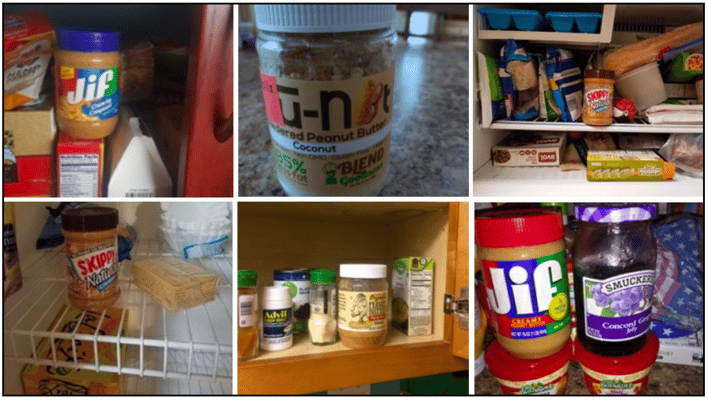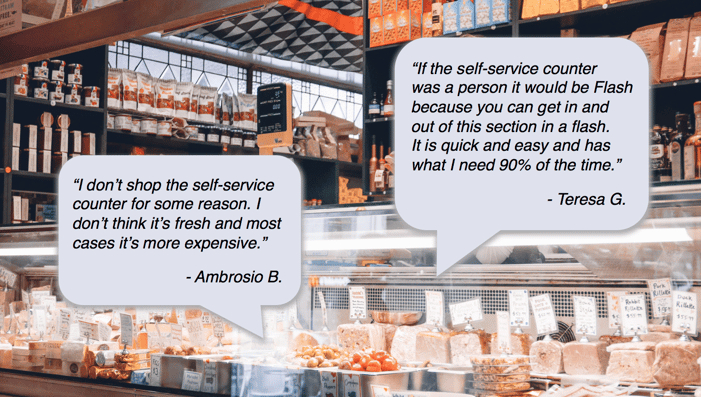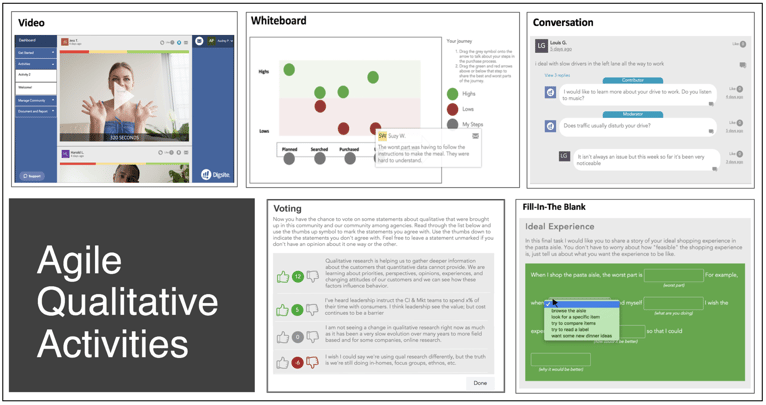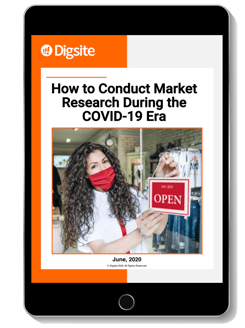Hormel has made a huge shift in the way they handle research. This global company has more than 20,000 employees and 50+ brands, such as Spam, Skippy, Black Label Bacon, Applegate, and many more. As you might imagine, they rely heavily on consumer insights. I recently co-presented with Heather Vossler, Hormel Director of Insights and Innovation, to learn about their approach to research, how it has shifted in the past few years, and how they are adapting during COVID-19.
Heather shared Hormel’s story of organizational change, including how she helped the Consumer Insights team revamp everything from how they buy research to the research methods they use. These shifts resulted in the team’s ability to spin up research much more quickly than before.
The old way
For years, Hormel had worked exclusively with custom suppliers for their research. As their insights needs increased and timelines accelerated, they realized they required more agility and always-on resources from both the qualitative and quantitative sides. “Our brands’ consumers were changing so fast; we needed to have more control over, yet also flexibility in how we were going to approach certain insights needs,” Heather explained.
The first step: adding an ongoing community. “We had to do quite a bit of selling to get the organization to shift this way,” Heather said. But after they had one success with an “always on” resource, everyone was on board.

Identifying gaps
A few years later, they began to identify some research gaps, including:
- The overuse of participants in their ongoing communities that led to respondents knowing they were in a Hormel consumer community
- The need for more agility – for example, when working on a new brand, they didn’t have the right people because the community was based on existing brands. This meant they had to shift to full-service, which slowed them down
- The need for a robust qualitative approach – even with a cultural anthropologist on the team, they didn’t have a way to do pre-work or go deeper to get additional insights rapidly
Culture shift: How Hormel does research now
Hormel has now shifted to a hybrid approach – a mix of DIY and full service, with a variety of new technology tools to support their team. Being able to deliver insights in a more flexible and agile manner has resulted in a true cultural shift at Hormel. “Everything starts with an insight now,” Heather said. To make sure their approach and resources are structured and on target, the Hormel Consumer Insights team:
- Conducts a formal, annual assessment of contracted resources, as well as informal assessments throughout the year
- Provides a full summary of their resources to Hormel team members
- Centralizes all resources through the Consumer Insights team
- Shares learnings and insights with the organization
- Focuses on best practices
Online qual in action
Hormel has an always-on subscription with Digsite that allows them to conduct more robust qualitative research sprints in a quick and agile manner. According to Heather, they have Digsite Sprint studies going on almost 100% of the time. Some of the activities Hormel has used within the agile Digsite platform include concept mark-up activities, self-recorded videos, online chat conversations, and fill-in-the-blank storytelling. Here are two Hormel case studies that show how Hormel uses online qual.
Case study: Peanut butter
Hormel was seeing a lot of shifts in the nut butter category, with many new entrants and flavors. Consumers were also using nut butters differently than the traditional sandwich use. Hormel wanted to do some exploratory research to see how consumers felt about the category.
Solution: Consumers were brought into an online Digsite community to provide information about how they perceive, use, shop for, and store nut butters.
 Participant nut butter images
Participant nut butter images
“We were able to provide some [unmoderated] activities and then go back and start a conversation with the participants,” Heather said. They used the conversation activity to do additional probing, ask for more photos and get more detailed information.
Results: This informed the ethnography work that followed, which the team feels was much richer due to this online qual work they did ahead of time.
Case study: Deli meat (December 2019 and mid-COVID, May 2020)
Hormel has several brands in the deli section of grocery stores. They wanted to understand consumers’ pain points, how they shopped, and what they called the different sections of the deli.
They conducted a study in December 2019, but then COVID-19 hit and impacted food behaviors in many new ways.
Solution: They decided to go back and re-do a version of the December 2019 study, to understand how the COVID-19 pandemic has impacted consumers’ perception and shopping behavior in grocery store deli sections. Consumers shared their past and current attitudes and behaviors with respect to shopping in the deli sections of the grocery store.
 Participant quotes
Participant quotes
Results: New COVID-19 era deli shopping insights
- Consumers were avoiding high interactive categories due to both safety and time, which hurt many of the deli areas in the grocery store.
- With the increase in online shopping, many deli categories are not top of mind when shopping online, and the need was not as great with less away-from-home lunch occasions happening.
- Consumers shopping in the deli during COVID-19 want safety protocols visible (when is cleaning happening?). Employees’ personal hygiene also has an impact on their perception of food safety.
Benefits of agile research methods
Using a platform like Digsite with DIY plus supported services allows Hormel (and any company) to very quickly go in and build a flexible study. Here are some of the primary benefits:
- Time savings. Being able to launch a study in hours or days rather than weeks is a big advantage. The ability to tweak a study themselves can save time, but they also can have someone else do it for them. Not having to worry about the project management side of a study gives the team more time to think about activities and objectives.
- Increased feedback. More feedback leads to better ideas, better concepts, better products and marketing.
- Decreased risk and increased success. Research happens fast enough to inform important milestones and makes the research people more central to the team.
- Cost savings. Bundling research needs into a subscription and flexing between DIY and full service support as needed saves money.
How to choose the right research tool and approach for your organization
Now more than ever, it’s critical to gain consumer insights quickly. At Digsite, we do this by working in small development teams, breaking complex problems into short sprints, focusing on building and testing solutions concurrently, executing fast customer-driven feedback and integrating learning into a coherent whole.
After many years of trial and error, here’s an approach both Heather and I recommend to teams looking to add new consumer insights platforms and capabilities:
Technology side
- Do the capabilities of the technology match your research needs? (Do you need to do video? What types of targeting do you need to get to the right audience?) Make sure those are in place.
- How is it perceived in your organization? Make sure the technology will be used and seen as valuable. If your team doesn’t think they’ll use it, you’ll waste money on a subscription. Idea: run some pilots to get your team engaged in the process.
- Have a clear understanding of resource requirements. Does your team have the time, bandwidth and expertise to do everything themselves or not? Where are the gaps, where do they need support? Being clear on the necessary level of support needed is important.
Client side
- Create a training plan to ensure your team is comfortable with the tool. Plan in advance how you’re going to measure it, who will be responsible for it, how you’ll handle training, etc.
- Have a process in place to ensure utilization across the team.
- Make sure there’s a high enough volume of work to warrant the specific application. Thinking through this will help you understand how you’ll use it across the team.
- Decide how much flexibility you need in the tool. Do you need something DIY at lower cost, or do you need an always-on resource with some level of support?
For an in-depth look at how to conduct market research during the COVID-19 pandemic, check out our new eBook How to Conduct Market Research During the COVID-19 Era.






